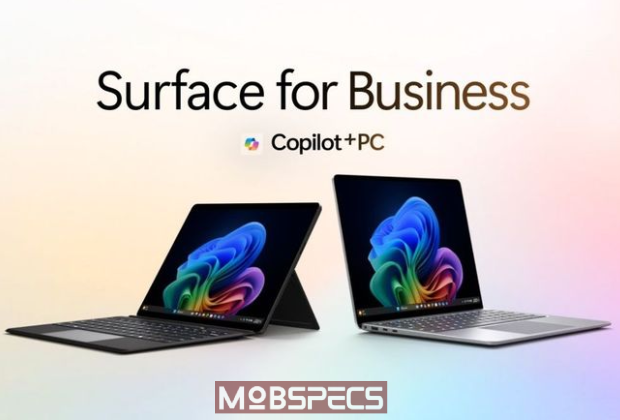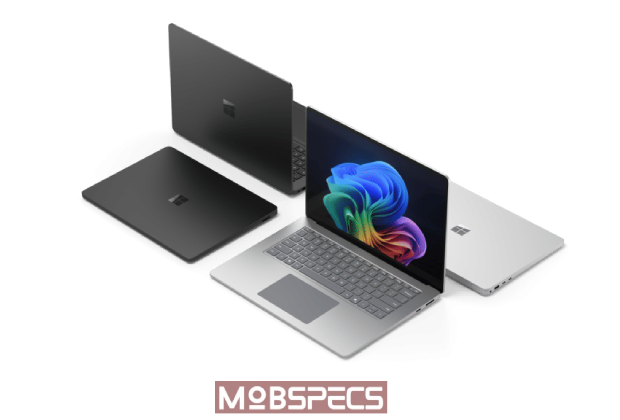
Microsoft has once again raised the bar in the premium computing segment with the launch of its revamped Microsoft Surface Pro and Surface Laptop, now powered by Intel’s cutting-edge Core Ultra 2 series processors. These devices, set to hit shelves on February 18th, promise significant performance upgrades, AI-driven capabilities, and enhanced connectivity, particularly targeting professionals and enterprises. For the first time, the Business Edition models introduce 5G support, marking a strategic push toward seamless mobility and productivity. Below, we delve into the pricing, specifications, and innovations that define these flagship devices.
Microsoft Surface Pro and Surface Laptop: Pricing and Availability
The new Microsoft Surface Pro and Surface Laptop will start at $1,499.99 (approximately ₹1,30,000, though regional pricing may vary). Both devices will be available globally through Microsoft’s official channels, authorized retailers, and enterprise partners. Pre-orders are expected to open a week prior to launch, with business customers gaining access to customized configurations, including the 5G-enabled Business Edition.
While the starting price aligns with previous generations, the inclusion of advanced hardware like Intel’s Ultra 2 chips and 5G connectivity positions these devices as premium contenders against rivals such as Apple’s MacBook Pro and Dell’s XPS series. Microsoft’s decision to maintain pricing parity despite hardware upgrades reflects its aggressive strategy to capture market share in the high-end productivity and enterprise segments.
Microsoft Surface Pro and Surface Laptop: Design and Portability
Microsoft Surface Pro:
Retaining its iconic 2-in-1 hybrid design, the Microsoft Surface Pro remains a benchmark for portability. Measuring 287 x 209 x 9.3mm and weighing just 872 grams, it is marginally lighter than its predecessor, making it ideal for on-the-go professionals. The magnesium alloy chassis ensures durability without compromising aesthetics.
Surface Laptop:
The clamshell-style Surface Laptop caters to users preferring a traditional form factor. The 13.8-inch model measures 301 x 225 x 17.5mm and weighs 1.35kg, while the 15-inch variant offers a larger footprint. Both sizes feature aluminum finishes, with Microsoft emphasizing a refined keyboard and trackpad experience.
Microsoft Surface Pro and Surface Laptop: Display Technology
Microsoft Surface Pro:
The Pro model boasts a 13-inch PixelSense Flow display with a 2880 × 1920 resolution, available in LCD or OLED variants. The OLED option, a first for the Pro lineup, delivers deeper blacks, vibrant colors, and improved energy efficiency. With a 120Hz dynamic refresh rate (adjustable based on content), Dolby Vision IQ certification, and 900-nit peak brightness, the display is tailored for creative professionals and multimedia consumption. Corning Gorilla Glass 5 ensures scratch resistance.
Surface Laptop:
The Laptop series offers two display sizes:
- 13.8-inch: 2304 × 1536 pixels
- 15-inch: 2496 × 1664 pixels
Both panels support touch input and feature Microsoft’s proprietary color calibration tools, ensuring accuracy for photo/video editing. While lacking OLED, the displays compensate with improved anti-reflective coatings and 120Hz adaptive sync.
Performance: Intel Core Ultra 2 and Snapdragon X Elite
At the heart of these devices lies Intel’s Core Ultra 7 268V processor, part of the Meteor Lake lineup. This chip leverages Foveros 3D packaging technology, integrating:
- Performance Cores (P-cores): For demanding tasks like video rendering.
- Efficient Cores (E-cores): Handles background processes to conserve battery.
- Low-Power E-cores: Dedicated to lightweight tasks, further enhancing efficiency.
A standout feature is the integrated Neural Processing Unit (NPU), which accelerates AI workloads locally. This enables real-time tasks like background noise suppression, facial recognition, and AI-enhanced photo editing without relying on cloud services.
Business Edition:
Enterprise buyers can opt for the Qualcomm Snapdragon
X Elite chip, a 4nm ARM-based processor promising superior battery life and 5G mmWave connectivity. This shift toward ARM architecture signals Microsoft’s long-term vision for always-connected PCs, though app compatibility remains a consideration (addressed via emulation tools in Windows 11).
Memory, Storage, and AI Capabilities
Both devices support up to 32GB of LPDDR5x RAM (50% faster than LPDDR5) and 1TB PCIe Gen4 SSD storage. The Gen4 SSD offers sequential read/write speeds up to 7,000 MB/s, significantly benefiting large file transfers and data-intensive applications.
The inclusion of the NPU transforms these devices into Copilot+ PCs, Microsoft’s branding for AI-optimized machines. Features include:
- Windows Studio Effects: AI-powered camera enhancements (auto-framing, gaze correction).
- Local AI Model Execution: Run models like Stable Diffusion offline for privacy-sensitive tasks.
- Smart Battery Optimization: AI predicts usage patterns to extend battery life.
Camera and Audio
Both models feature a 1440p front-facing camera with Windows Hello facial recognition and a 10MP rear camera (Surface Pro only). Advanced imaging algorithms enable 4K video capture, while dual microphones with voice focus minimize ambient noise.
Audio enhancements include Dolby Atmos-certified speakers and spatial sound support, ideal for virtual meetings and entertainment.
Microsoft Surface Pro and Surface Laptop: Battery Life and Connectivity
- Microsoft Surface Pro: Up to 14 hours of video playback (OLED model) or 16 hours (LCD).
- Surface Laptop: A staggering 20 hours, attributed to the efficiency of Intel’s Ultra 2 chip and larger battery capacity.
Connectivity options mark a generational leap:
- 5G Sub-6GHz and mmWave (Business Edition): Enables gigabit download speeds and low-latency remote access.
- Wi-Fi 7: Theoretical speeds up to 40 Gbps, improved congestion handling.
- Thunderbolt 4 (USB-C): Supports dual 4K displays or 8K HDR output.
- Surface Connect: Backward compatibility with docks and chargers.
Microsoft Surface Pro and Surface Laptop: Security and Enterprise Features
Microsoft has fortified security with:
- Microsoft Pluton: A dedicated security processor isolating sensitive data.
- TPM 2.0 + BitLocker Encryption: Safeguards against firmware attacks.
- NFC Authentication: Enables tap-to-login via smart cards or smartphones.
Enterprise buyers also gain access to Windows 365 integration, zero-touch deployment, and extended software support.

Microsoft Surface Pro and Surface Laptop: Market Context and Competition
The Surface Pro and Laptop enter a competitive landscape dominated by Apple’s M3 MacBooks and Dell’s AI-driven XPS series. Microsoft’s emphasis on 5G and local AI processing positions these devices as pioneers in the “AI PC” era, appealing to industries like healthcare, finance, and creative sectors.
Final Thoughts
With the 2024 Surface lineup, Microsoft blends raw power with intelligent features, setting a new standard for productivity. The addition of 5G and ARM options underscores its commitment to versatility, while AI integration future-proofs these devices for emerging workloads. Priced at a premium, they cater to professionals seeking cutting-edge technology, though cost-conscious buyers may await post-launch promotions. As the February 18th release nears, all eyes are on how these devices will shape the evolving narrative of hybrid work and AI-driven computing.
Also Read Below:
MediaTek Dimensity 8400-Ultra vs. Snapdragon 8s Gen 3: A Comprehensive Performance Analysis